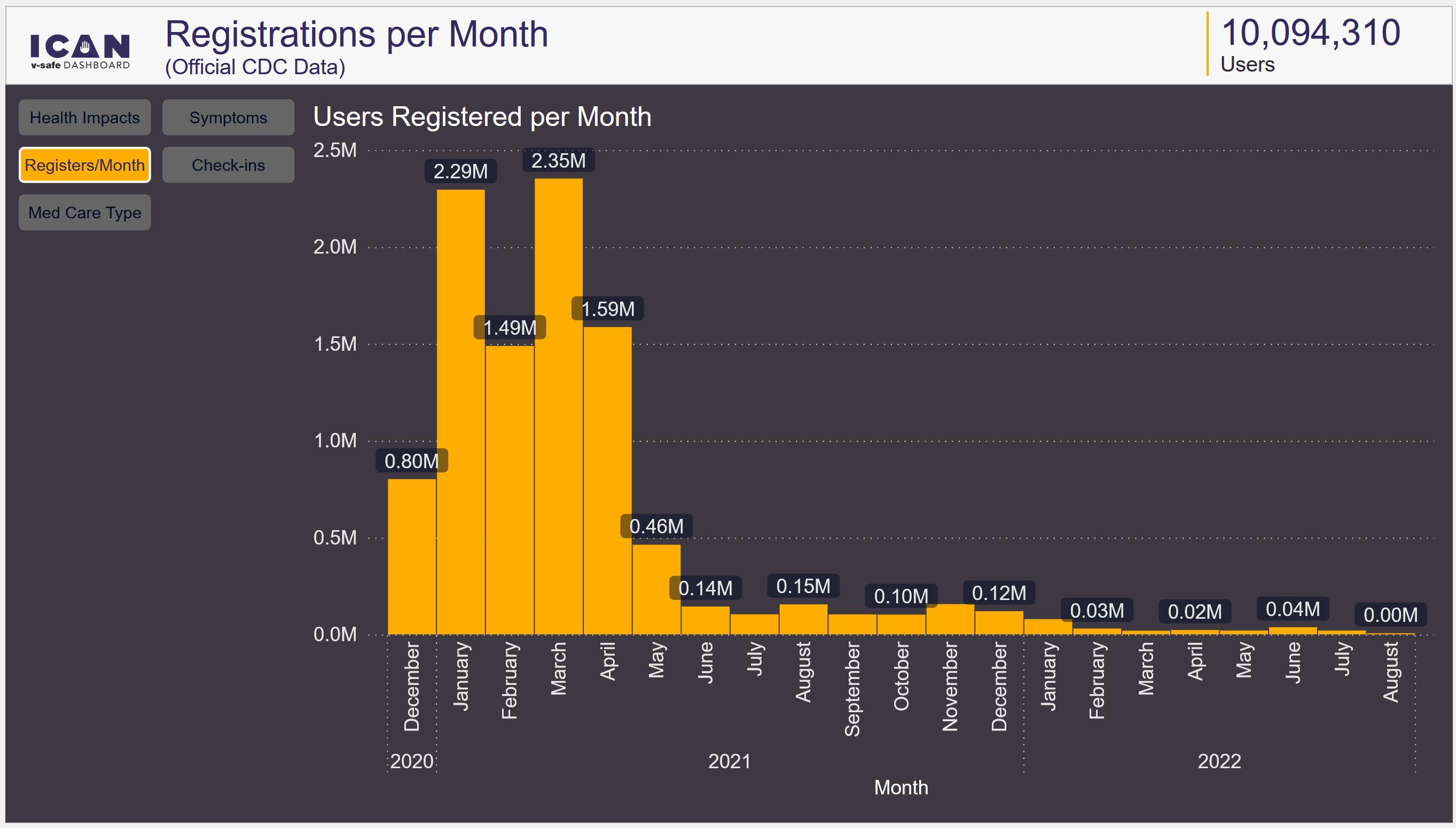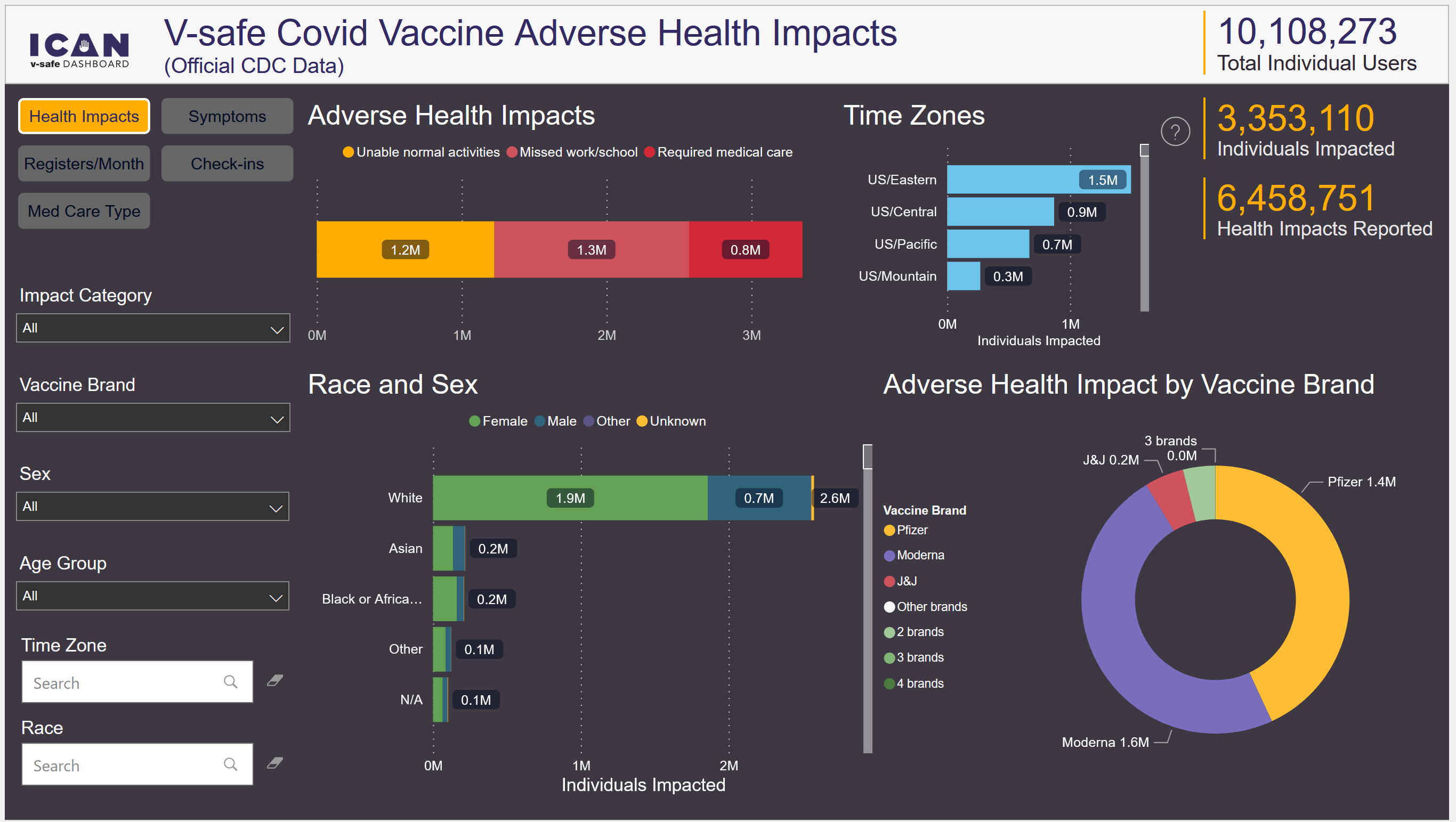V-Safe data project
A collaboration between:
1 -> Tom Yengst
Science Fellow, Children's Health Defense
and OpenVAERS
2 -> The Humanity Projects Team
Part 1 - Description of the Database
Review Date: February - 2023
Overview:
-
V-safe is a safety monitoring system that allows its users to share with the CDC how they, or their dependent, feel after getting a COVID-19 or mpox vaccine.

-
The V-safe system is installed by the user as an app on their mobile phone. After enrolment, V-safe sends the user personalised and confidential health check-ins via text messages and web surveys to asking the user how they feel, as well as if they experience any side effects after vaccination. Users are encouraged to complete health check-ins and how they feel, even if they don't experience side effects after vaccination.
-
The user's personal information in V-safe is protected so it is safe and private; and the user can opt out at any time.
FOIA request
-
Access to all the V-safe data records was obtained after a FOIA (Freedom of Information Act) request for the release of V-safe data.
The CDC delivered the requested data to the Informed Consent Action Network (ICAN) on 30-September-2022, and it is accessible for public use.
-
ICAN provides a dashboard that allows users to visualise the data available. It also allows users to download the raw data to perform their own analysis.
-
The figure below is a snapshot from the V-safe dashboard on ICAN that shows the number of users who registered in the V-safe platform over time (installed the app). It shows that there were 10,094,310 registrations from December 2020 to August 2022 and that most users installed the app in the first 6 months, from December 2020 to May 2021.

The two primary sources of data for V-safe database are "registrant" (with data on each person), and "health_checkin" (which has the log of health status as defined by the user, at various intervals following vaccination).
As previously mentioned, there are 10,094,310 registrants in the respective data table. Registrant data includes race, sex and post code.
The health_checkin data table has 144,856,043 health checks (roughly 14 per individual).
The vaccine data includes the type, vaccination date, and whether multiple vaccines were administered simultaneously, linked to each recipient.
Below we can observe the snapshot of a dashboard, obtained from ICAN , that summarises some of the database contents.
 Description of the Health_Checkin table:
Description of the Health_Checkin table:
For each ‘health_checkin’, there are a number of categories where the severity of reaction is self-reported by the user on a scale (numerically converted) of None (0), Mild (1), Moderate (2), or Severe (3).
The categories cover various ailments generally associated with vaccine administration, coded as follows:
'PAIN', 'MUSCLE_OR_BODY_ACHES', 'HEADACHE', 'FATIGUE', 'CHILLS', 'DIARRHEA', 'REDNESS', 'NAUSEA', 'SWELLING', 'VOMITING', 'JOINT_PAINS', 'ITCHING’,‘ABDOMINAL_PAIN’.
Two other categories within health_checkin are termed HEALTHCARE_VISITS and HEALTH_IMPACT. This is where the reaction is severe enough to require professional medical care (HEALTHCARE_VISITS) or being away from school or employment (HEALTH_IMPACT). There are a limited range of possible values in each category, which are listed below:
HEALTH_IMPACT
- Be unable to do your normal daily activities
- Be unable to work or attend school
HEALTHCARE_VISITS
- Emergency room or emergency department visit
- Get care from a doctor or other healthcare professional
- Hospitalisation
- Outpatient clinic or urgent care clinic visit
- Telehealth, virtual health, or email health consultation
Disadvantages of VSAFE data:
Deaths are not reported, so there is no way to differentiate between drop-off due to death or due to discontinuation of use for other reasons.
No age data and limited other information about user.
No data from an unvaccinated population.
Selection bias associated with smart phone use (people who do not use smart phones are likely to be older or in poverty) and English speakers (large Hispanic population who do not comfortably speak English are more likely to be of lower socioeconomic status).
No information about the nature of unsolicited side effects.
No question for participants about whether they developed any new, permanent conditions after vaccination.
For those who do not go to work or school, it would not necessarily capture newly acquired symptoms or medical conditions if they were not represented in the symptom checklist.
It does not ask about covid infection, so we do not know if some events were due to covid, accidents, previous health conditions, etc.
Observations
-
The V-safe safety monitoring system is an interesting source of data when trying to assess the potential scale of the damage associated to the Covid-19 inoculations in the context of the V-Damage project.
-
In part 2 we take a closer look at the data and how it can be used to further our knowledge in this project.



